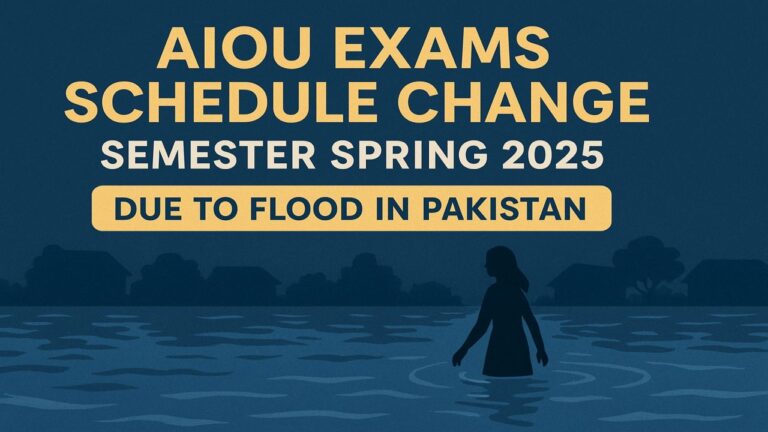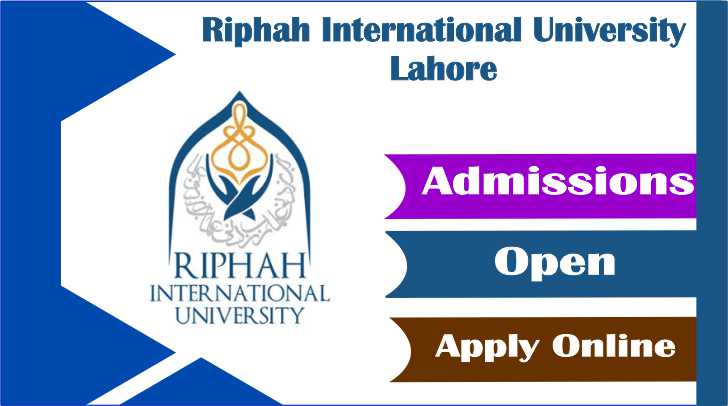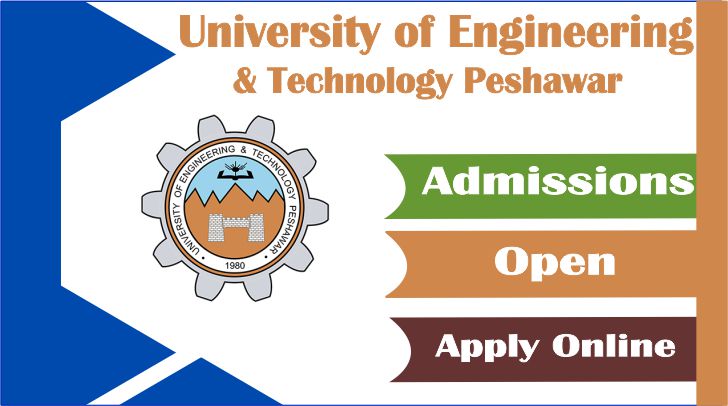AIOU 1424 Code English-II Solved Paper Spring 2022
Gear up for success with the AIOU 1424 Code English-II Solved Paper for Spring 2022, tailored for students of BA, ADP, and BS programs. This solved paper provides a detailed breakdown of the Spring 2022 examination, covering essential areas like précis writing, paragraph composition, formal letters and applications, and key grammar exercises. With clearly written answers and a focus on exam-style questions, this resource is perfect for students looking to practice effectively and improve their writing proficiency before exams.
To explore more solved papers, guess papers, and educational content for AIOU programs, visit mrpakistani.com. For expert video tutorials and assignment solutions, don’t forget to subscribe to our YouTube channel Asif Brain Academy.
| 1424 Code Solved Paper Spring 2022 | |
|---|---|
| Level | BA/BS |
| Semester | Spring 2022 |
| Subject/Course Code | Compulsory English-II (1424) |
| Maximum Marks | 100 |
| Pass Marks | BA: 40 /AD: 50 |
| Medium of Instruction | Compulsory English II |
| ATTEMPT All QUESTIONS | |
1424 Code Past Paper Spring 2022 – English II Compulsory

1424 Code Past Paper Spring 2022 Solution
Write an essay of 250 words with an introduction, body, and conclusion, on one of the following topics.
i. Technology in Education
ii. Floods in Pakistan and Challenges for Government
iii. Dealing with the pandemics
Technology in Education
Introduction:
In today’s fast-paced digital world, technology has revolutionized nearly every aspect of life, including education. The integration of technology into classrooms has transformed the traditional learning environment into a more interactive and engaging space. From digital whiteboards to online learning platforms, technology is playing a key role in enhancing both teaching and learning processes.
Body:
Technology in education allows access to a wealth of information and resources from across the globe. Students can attend virtual classes, watch educational videos, and use online libraries anytime and anywhere. It bridges the gap for students living in remote areas where quality education might not be readily available. Additionally, teachers benefit from advanced tools such as smart boards, e-books, and learning management systems that help in delivering lessons effectively.
Online platforms like Google Classroom, Zoom, and Khan Academy have become essential in modern education, especially during the COVID-19 pandemic. They enable distance learning and have kept education going even during lockdowns. Moreover, interactive learning apps and gamified education methods have made learning fun and effective for students of all ages.
However, the digital divide remains a challenge. Not all students have equal access to the internet or devices, which creates inequality in education. Proper infrastructure and government support are needed to ensure every student benefits from technological advancements.
Conclusion:
In conclusion, technology in education has the potential to transform learning experiences and make education more accessible and efficient. With proper planning and equal access, it can bridge educational gaps and prepare students for a tech-driven future. The future of education lies in harnessing technology wisely and inclusively.
Floods in Pakistan and Challenges for Government
Introduction:
Pakistan is a country frequently affected by natural disasters, and floods are among the most destructive. Due to heavy monsoon rains, melting glaciers, and poor infrastructure, many areas across Pakistan face devastating floods every year. These floods not only displace thousands of families but also cause severe economic and environmental damage. The government faces numerous challenges in responding effectively to such disasters.
Body:
Floods in Pakistan destroy homes, agricultural lands, roads, and bridges. They affect the poorest segments of society the most, leaving them homeless and without food or clean water. Crops are washed away, resulting in food shortages and price hikes. Livestock is lost, which further impacts rural livelihoods. Health problems also arise due to waterborne diseases and lack of medical services in affected areas.
One major challenge for the government is the lack of proper flood forecasting and warning systems. Many flood-prone areas lack drainage systems or embankments to protect against overflowing rivers. Corruption and lack of coordination among institutions further worsen the situation. Relief efforts are often delayed and poorly managed. Additionally, the government faces budget constraints and must rely on international aid for large-scale disasters.
Climate change is making floods more frequent and intense. Without long-term planning, reforestation, and better water management systems, Pakistan will continue to suffer from these disasters.
Conclusion:
In conclusion, floods in Pakistan are a recurring crisis that poses serious challenges for the government. To reduce future losses, the government must invest in infrastructure, disaster management systems, and climate adaptation strategies. Public awareness, efficient planning, and transparent use of resources are essential to handle this growing threat.
Dealing with the Pandemics
Introduction:
Pandemics are global health emergencies that affect millions of people and disrupt normal life. The COVID-19 pandemic is a recent example that tested the preparedness and response systems of countries worldwide. Dealing with pandemics requires timely action, strong healthcare systems, and coordinated efforts from governments, health professionals, and citizens.
Body:
To manage a pandemic effectively, early detection and response are crucial. Governments must invest in healthcare infrastructure, testing facilities, and vaccination programs. Public awareness through media and education campaigns helps prevent the spread of infections. It is also essential to implement lockdowns, social distancing, and hygiene practices when necessary.
One major challenge is misinformation and panic among the public. Authorities must ensure that people receive accurate information. Collaboration between nations, the World Health Organization (WHO), and scientific communities is vital to share data and develop effective treatments and vaccines.
Economic challenges also arise during pandemics. Lockdowns affect businesses, jobs, and food supplies. Governments must provide financial aid and support to vulnerable communities. Maintaining a balance between health safety and economic stability is a key responsibility.
Conclusion:
In conclusion, pandemics pose serious threats to health, economy, and society. Dealing with them requires unity, preparedness, and quick response. With proper planning, global cooperation, and public responsibility, the impacts of pandemics can be minimized, and societies can recover stronger.
Compare and contrast unmarried life and married life. Write at least five similarities and five differences between the two phases of a person’s life.
Comparison Between Unmarried Life and Married Life
Similarities:
1. Emotional Experiences: Both unmarried and married individuals experience a wide range of emotions including happiness, stress, loneliness, and love. Emotional ups and downs are common in both phases as people navigate life’s challenges.
2. Personal Growth and Learning: Whether married or unmarried, individuals face opportunities for self-improvement, learning new skills, and understanding themselves better through life experiences.
3. Responsibilities: In both phases, individuals carry responsibilities such as managing their careers, social relationships, and personal well-being. Responsibility does not disappear with marital status, though it may take different forms.
4. Social Connections: Both unmarried and married people maintain friendships, family ties, and community relationships. Social support plays a vital role in mental and emotional health in both phases.
5. Life Goals and Aspirations: People in both unmarried and married stages set goals for their future, whether it is related to education, career growth, financial security, or personal fulfillment.
Differences:
1. Freedom and Independence: Unmarried individuals usually enjoy greater personal freedom in making decisions, pursuing hobbies, and managing their time. In contrast, married life often requires negotiation and compromise, as decisions must consider the spouse and sometimes children.
2. Emotional and Physical Support: Married life provides a structured support system with a spouse who shares emotional burdens, daily challenges, and companionship. Unmarried individuals may rely more heavily on friends and family for emotional support.
3. Financial Responsibilities: In marriage, financial resources and expenditures are typically shared, requiring joint budgeting, planning for family expenses, and long-term savings. Unmarried people manage their finances independently, often with fewer shared commitments.
4. Time Allocation and Priorities: Married individuals often allocate significant time to family duties, child-rearing, and maintaining a household. Unmarried people usually have more discretionary time to focus on personal interests, education, or social activities.
5. Social Expectations and Pressure: Married life comes with societal expectations such as maintaining family harmony, fulfilling roles of spouse and parent, and upholding social customs. Unmarried people may face pressure to marry but generally experience fewer day-to-day social obligations.
Use sequence markers to narrate the memorable trip that you recently undertook to the Northern areas of Pakistan.
Memorable Trip to the Northern Areas of Pakistan
Last month, I had the opportunity to visit the breathtaking Northern areas of Pakistan, which turned out to be one of the most unforgettable trips of my life. First of all, I planned the trip meticulously, deciding to visit Hunza, Skardu, and Naltar valley. Initially, our journey started from Islamabad early in the morning. The roads were winding, surrounded by beautiful mountains, which heightened our excitement.
Then, after several hours of traveling, we reached Hunza. The serene atmosphere and the majestic view of Rakaposhi and Ultar Sar left us spellbound. After that, we visited the Baltit Fort and learned about the rich history and culture of the region. The locals were warm and welcoming, adding charm to our stay.
Next, we proceeded to Skardu. Upon arrival, the sheer beauty of the Deosai National Park amazed us. We spent a day exploring the vast plains and spotting wildlife. Meanwhile, we also visited Shangrila Resort, a popular tourist spot known for its picturesque surroundings.
Following this, our final stop was the enchanting Naltar Valley. During the visit, we enjoyed skiing and admired the lush green forests and crystal-clear lakes. The fresh mountain air rejuvenated our spirits.
Finally, after ten days of adventure and exploration, we returned home with countless memories and stunning photographs. This trip not only refreshed my mind but also gave me a deep appreciation for the natural beauty and cultural richness of Northern Pakistan.
Overall, the journey was a perfect blend of adventure, learning, and relaxation, which I will cherish forever.
By burning different types of fuel to run vehicles, machines, and factories, we cause pollution in our environment. What are the effects of pollution on human health? Write a detailed note.
Effects of Pollution on Human Health
Pollution caused by burning fuels in vehicles, machines, and factories has become a major environmental and health concern worldwide. When fossil fuels such as coal, petrol, diesel, and natural gas are burned, they release harmful pollutants like carbon monoxide, sulfur dioxide, nitrogen oxides, and particulate matter into the air. These pollutants have severe effects on human health, which can be both immediate and long-term.
Firstly, air pollution directly affects the respiratory system. Exposure to polluted air causes problems such as asthma, bronchitis, and other chronic obstructive pulmonary diseases (COPD). Fine particulate matter can penetrate deep into the lungs, leading to inflammation and reduced lung function. People with pre-existing conditions, children, and the elderly are particularly vulnerable.
Secondly, pollution increases the risk of cardiovascular diseases. Harmful chemicals in the air enter the bloodstream through the lungs, leading to increased blood pressure, heart attacks, and strokes. Studies have shown a direct correlation between high pollution levels and heart-related mortality.
Moreover, prolonged exposure to polluted environments can weaken the immune system, making individuals more susceptible to infections. It can also lead to developmental issues in children, including reduced lung growth and cognitive problems.
Additionally, pollution contributes to various types of cancers, especially lung cancer. Carcinogenic compounds released by industrial emissions and vehicle exhaust are responsible for this increase.
Lastly, pollution can also affect mental health by causing headaches, dizziness, fatigue, and in some cases, neurological disorders.
In conclusion, pollution resulting from fuel combustion severely impacts human health. It is vital to reduce emissions through cleaner technologies, promote the use of renewable energy, and implement stricter environmental regulations to protect public health and ensure a cleaner, safer environment for future generations.
Identify Facts and Opinions in the following sentences. Write “F” in front of the facts, and “O” in front of the opinions:
1. You are going to be ill if you go out in the cold.
2. We are 2 brothers and as many sisters.
3. Paris is a city in France.
4. I am the eldest among my sisters.
5. She is going to pass her exams in very good grades.
1. O – “You are going to be ill if you go out in the cold.” This is an opinion because illness depends on various factors, and cold alone does not always cause illness.
2. F – “We are 2 brothers and as many sisters.” This is a fact because it states a clear, verifiable family relationship.
3. F – “Paris is a city in France.” This is a fact; Paris is geographically located in France.
4. F – “I am the eldest among my sisters.” This is a fact based on birth order and family structure.
5. O – “She is going to pass her exams in very good grades.” This is an opinion or prediction, not a guaranteed fact.
Write sentences based on comparison and contrast by using the following words: But, as opposed to, both, neither, each, whereas, neither…nor, on the other hand, either…or.
1. Both Ali and Ahmed enjoy playing cricket during their free time.
2. She prefers tea, whereas her brother likes coffee.
3. Neither the manager nor the assistant was present at the meeting.
4. Each student must submit their assignment before the deadline.
5. I like summer, but my sister prefers winter.
6. As opposed to living in the city, they enjoy the peace of the countryside.
7. On the other hand, many people support the new policy while others strongly oppose it.
8. You can either come with us now or join us later at the restaurant.
9. Neither the movie nor the book was interesting to me.
10. The first project was successful, but the second one faced many challenges.
What are the implied meanings of the following sentences?
1. The world is too small.
2. It is quite cold outside.
3. You look tired today.
4. I forgot my wallet at home.
5. We have a meeting in 5 minutes.
1. The world is too small.
Implied meaning: It is surprising to meet someone familiar or unexpected in an unlikely place or situation.
2. It is quite cold outside.
Implied meaning: You might want to wear warm clothes or prepare yourself for chilly weather.
3. You look tired today.
Implied meaning: You may need rest or are possibly stressed or overworked.
4. I forgot my wallet at home.
Implied meaning: I cannot pay for anything right now or I need help with money.
5. We have a meeting in 5 minutes.
Implied meaning: You should get ready quickly or we should wrap up what we are doing.
Following the guidelines provided in Unit 9 of the textbook, write a news report of 10 lines about a recent political/entertainment/social/sports event.
News Report:
Title: Pakistan Wins Historic Cricket Series Against Australia
Lahore, May 28 – In an exciting turn of events, Pakistan’s cricket team defeated Australia in the recently concluded three-match Test series. The final match held in Lahore witnessed a thrilling finish, with Pakistan securing victory by 5 wickets. Key players like Babar Azam and Shaheen Afridi performed exceptionally well, earning praise from fans and experts alike. This win marks Pakistan’s first series victory over Australia in over a decade. The team captain expressed his gratitude to the players and supporters during the post-match ceremony. Fans celebrated across the country, waving flags and chanting slogans of patriotism. Analysts believe this win will boost Pakistan’s confidence for upcoming international tournaments. The Pakistan Cricket Board has announced a series of events to honor the players. Overall, the series showcased Pakistan’s growing strength in international cricket and sportsmanship. The nation eagerly looks forward to more such memorable victories in the future.















